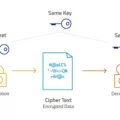There is a growing demand for smart, scalable, and flexible network solutions that can deliver enhanced performance for edge use cases. 5G network slicing allows enterprises to benefit from custom network solutions that drive innovation and enhance performance. In this guide, you will learn all you need to know about 5G network slicing, what it is, and how it works.
What Is 5G Network Slicing, and How Does It Work?
5G network slicing refers to virtual network slicing on a 5G network. Virtual network slicing creates virtual, or logical, divisions on a single physical network infrastructure, with these divisions referred to as slices.
Each slice has a different purpose and is designed to meet a specific need. These slices can be optimized for specific use cases, with reliability, latency, and performance tailored to the specific use case and its requirements.
Commercial and Industrial Use Cases for 5G Network Slicing

There are numerous commercial and industrial use cases that can benefit from 5G network slicing. For example, think of a large enterprise that provides company-managed devices to its employees. By allocating a network slice to be used by such devices, all traffic from and to these devices can be routed through that network slice, where specific security, authentication, and other rules can be applied automatically.
Or, imagine a large warehouse where AI-driven robots are employed to perform menial tasks. These may be autonomous forklifts or other robots. A network slice can be allocated to these robots so that they remain separate from the rest of the network. If there is a surge in network activity in the rest of the network, the autonomous bots can enjoy continued access to the network resources they need, ensuring human employees in their vicinity or working directly with those machines remain safe.
Network slices can also be allocated to self-driving vehicles, remote surgery, patient monitoring, point-of-sale systems, and smart energy grids.
Why 5G Network Slicing Matters for Enterprises
Network slicing can ensure that not only is sensitive data kept safe and sandboxed from the rest of the network, but that critical infrastructure is unaffected by activity in the rest of the network and protected from downtime. This is accomplished by isolating critical sectors and mission-critical data and guaranteeing resources for them, reducing disruptions that would otherwise affect the entire network at once.
This is critical for use cases such as remote surgery, patient monitoring, and autonomous delivery fleets.
How to Implement 5G Network Slicing in Your Enterprise

Implementing 5G network slicing in your enterprise will require a comprehensive plan by your IT team. First, they will need to identify business objectives and requirements, ensure the required infrastructure is in place (including compatible devices), and contract with a 5G network provider.
Service Level Agreements will need to be drafted and contracts signed. After an implementation plan is developed and followed, continued monitoring will be necessary to ensure performance utilization.
Challenges and Considerations When Using 5G Network Slicing
Network slicing is not without its challenges. One of the main challenges is properly identifying business requirements and ensuring that applications are properly aligned to those requirements. The number of network slices required for each customer and the specific applications of each slice must be carefully considered. In addition, real-time performance must be monitored to ensure it meets expectations.
Cybersecurity is another critical challenge, especially if certain slices are tailored to mission-critical sectors. Finally, companies must ensure they have access to an IT team that can maintain and monitor the network. Companies also need to choose a good service provider, as the service provider will be responsible for the bulk of the maintenance and service provision.
The Future of 5G Network Slicing in Enterprises

5G and network slicing are both still in their infancy stages. As 5G becomes more popular, more companies may see a benefit of 5G network slicing and adopt it.
5G network slicing requires standalone 5G networks, which continue to be rolled out by service providers. Furthermore, as IoT, AI, and remote applications become more widespread, there will be a greater need for 5G network slicing. Examples include several use cases mentioned above, such as remote surgery, patient monitoring, and autonomous fleets and robots.
Conclusion
While 5G network slicing is still in its infancy, it has a huge potential to disrupt the digital age, especially as standalone 5G networks become more common. This could be one of the key differences between 5G and 4G, driving innovation, business growth, and performance in many critical sectors.








